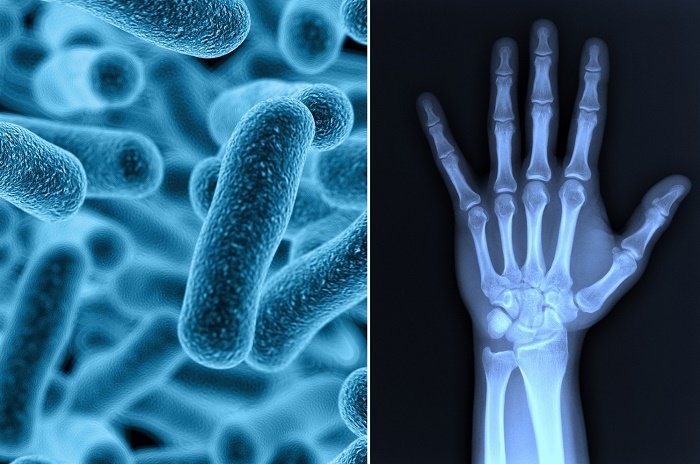What is the normal microbiota?

The normal microbiota of the human body is immeasurable when it comes to complexity. Some bacteria are essential and remain forever, while others are in the body temporarily.

Bacteria are microorganisms that, despite their small size, play an essential role in the functioning of our world. It is estimated that they account for 50% of the total biomass of the planet. Humans also show indispensable relationships with them through normal microbiota.
Next, we are going to show you what this normal microbiota of our body, also called the microbiome, is and what it is made of.
Table of Contents
What is the normal microbiota?
The normal microbiota or microbiome is defined as the set of microorganisms that are regularly found in our body in healthy individuals, distributed in different parts of the body.
This interaction is a symbiotic relationship between the host and the bacteria, since both components derive benefits from it. Some of these are as follows:
- Bacteria help the digestion of food that could not be assimilated by humans in any other way.
- They produce vitamins and compounds that are not obtained from other sources.
- They protect our body from the colonization of other microorganisms that can be pathogens, something known as microbial antagonism.
The normal microbiota is essential in the proper functioning of our physiological systems. Sources such as the National Autonomous University of Mexico estimate that we have around 100 billion microorganisms in the body. This shows that we cannot conceive of our existence as it is today without the microbiome.
Human microbiota categories
The term flora is used incorrectly if we analyze the use of the word, since it has been established that bacteria do not have any kind of kinship with plants. For this reason, it is better to refer to the different bacterial populations grouped by their functions as microbial ecosystems.
The set of all these populations give rise to the normal microbiota, which is divided into two categories:
- Autochthonous microbiota: they are the microorganisms that live in our body for an indefinite or long time. They participate in quantifiable physiological processes and have evolved together with our species thanks to the fact that they have adapted to the environment that we offer them.
- Allochthonous microbiota: these microorganisms can be found in any habitat and can appear in our body accidentally or temporarily. They do not participate in physiological processes, since their relationship with humans is based on casual encounters.
This general term can also be qualified according to the residence time of the organisms:
- Latent microbiota: it is the set of organisms that the host presents throughout its life cycle. In this case, the host is us. Populations do not usually fluctuate significantly; they remain constant and the symbiotic relationship is complete.
- Transient microbiota: it is one that presents continuous fluctuations in its population and is not usually essential for the survival of the host. Factors such as time of year, age or drugs can cause variations in it.
Thus, the bacteria in our intestinal tract would be an example of a native and latent microbiota. They are necessary for the proper functioning of the digestive system and remain with us throughout life.
What is the normal microbiota made of?
In a healthy living being, internal tissues such as the blood or the brain are free of bacteria. By contrast, the external ones and surrounded by mucous membranes, such as the intestine, the skin or the pharynx, present abundant symbiotic microorganisms. The gut microbiota is estimated to be made up of more than 400 species of bacteria. We go further: for every human cell there are an estimated 10 microbes in our body.
Covering all the significant species present in the normal microbiota is practically impossible. Therefore, there are lists with the most common species by body region, according to their common, occasional, rare presence or as a possible pathogen. The microbiota has a very clear representation in certain regions such as:
- The skin, dominated by gram-positive bacteria.
- The intestine, where the microbiota can weigh around 1.5 kilograms.
- The vagina, where the primary genus is Lactobacillus (96% of all microbes in the area).
- The mouth , which has one of the most complex and heterogeneous microbiotas in the body.
An essential microscopic world
As we have seen in a general way, the normal microbiota of the human body is immeasurable when it comes to complexity. Certain ideas must be clear to us: some bacteria are essential and always remain in the body, while others are in our body temporarily.
These bacterial populations vary according to the region and the individual, but all of them make up the normal microbiota of the human being.


